Million Dollar Babies
While debt and credit were replacing cold hard cash as the dominant form of global capital, Mark Wagner was doggedly turning forsaken dollar bills into smart and playful collages.

Interview by Nicole Pasulka
How did you start working with money, specifically dollar bills?
I was making a lot of collage and artists books using Camel Cigarette packages. To a large extent it was the familiarity of the pack for people that made the work effective. That led me to the familiarity of the dollar bill. I started small with the bills. Bending strips of the bills became white noise so I started doing color separation. I like old, dirty crumpled bills, but I only use newer ones so the contrast between light and dark is more pronounced. Continue reading ↓
All images used with permission, © copyright the artist, all rights reserved.
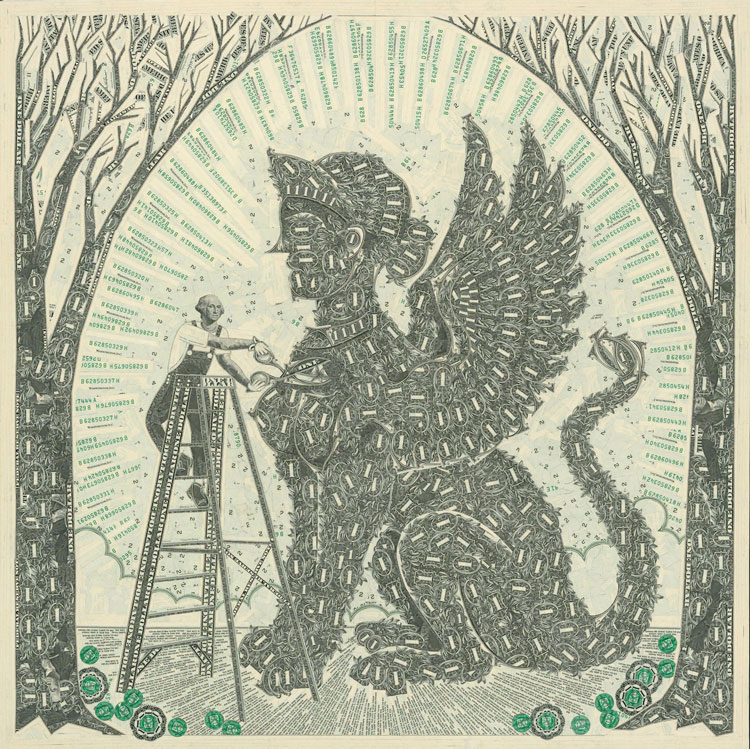
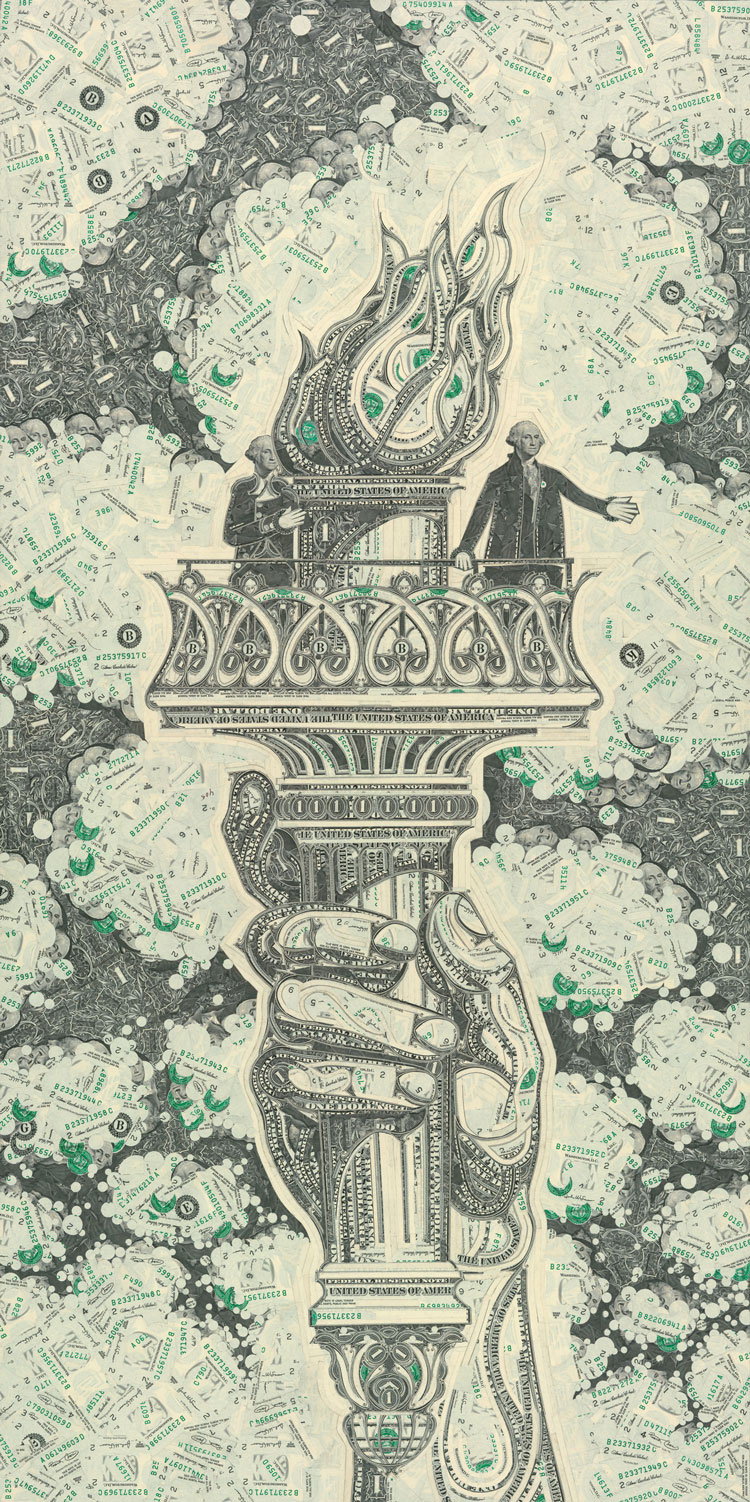
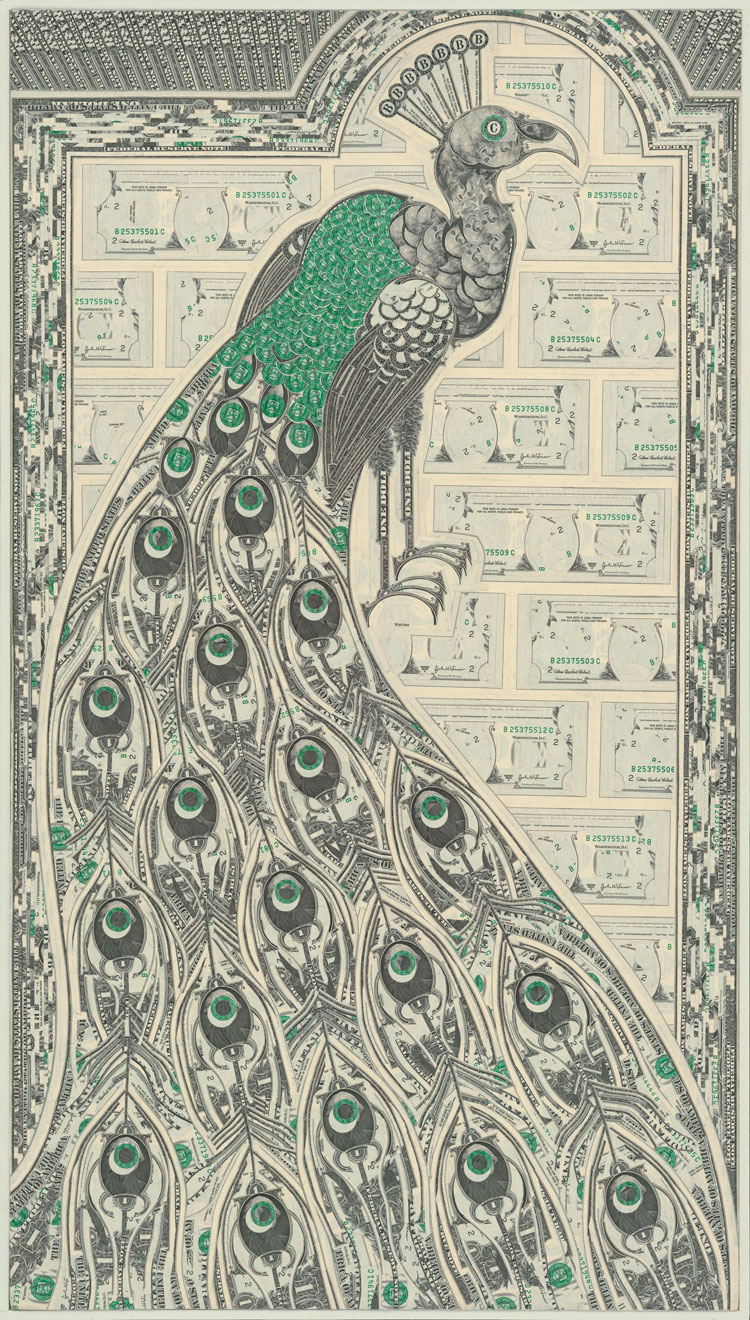
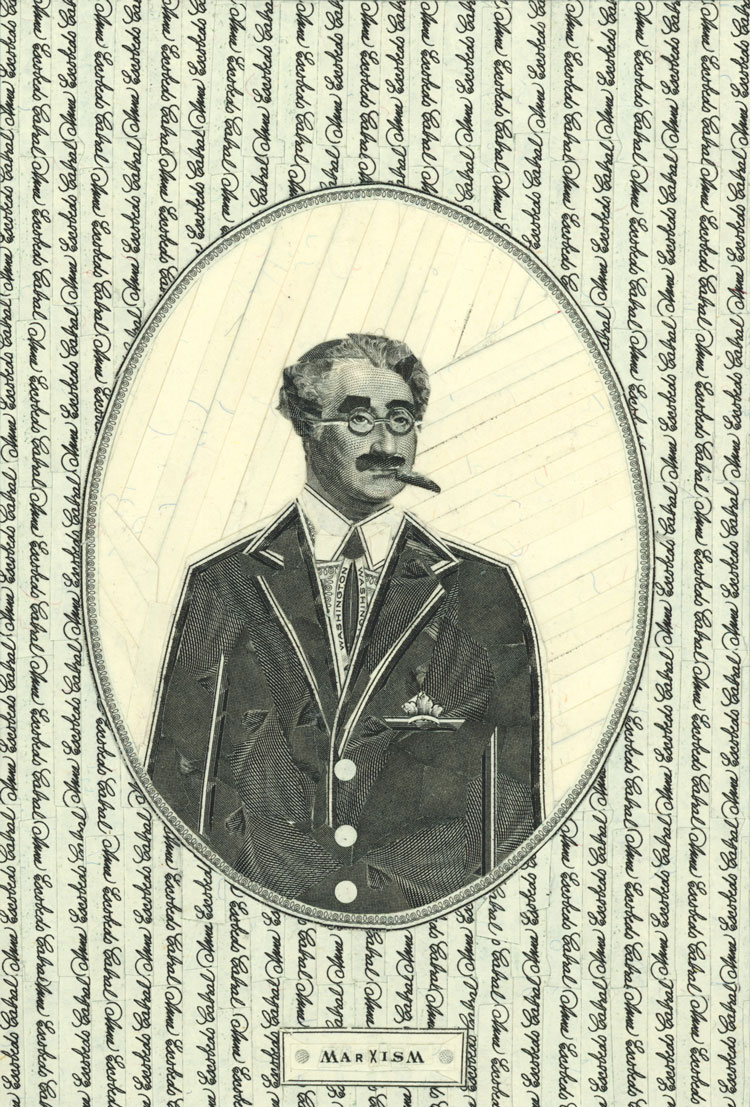
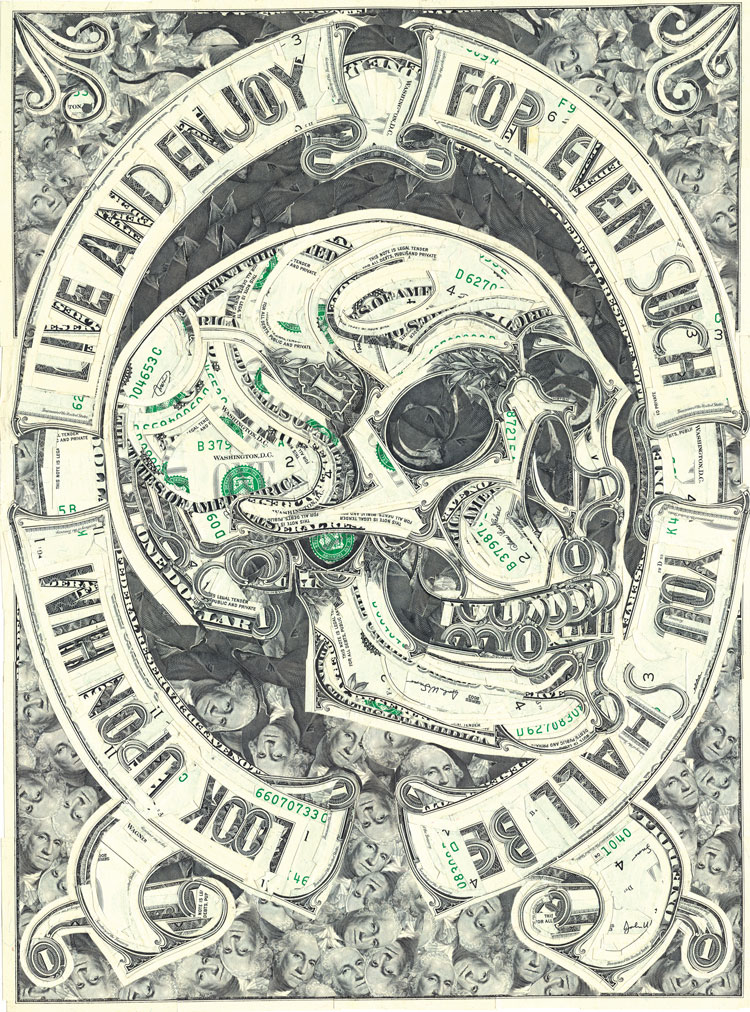
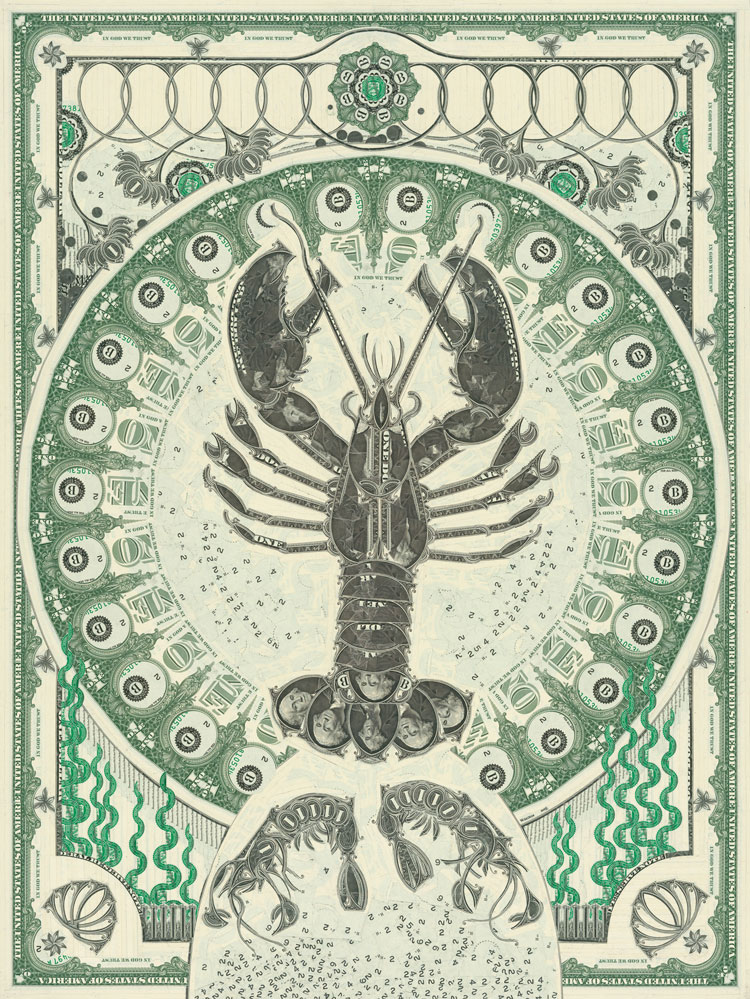
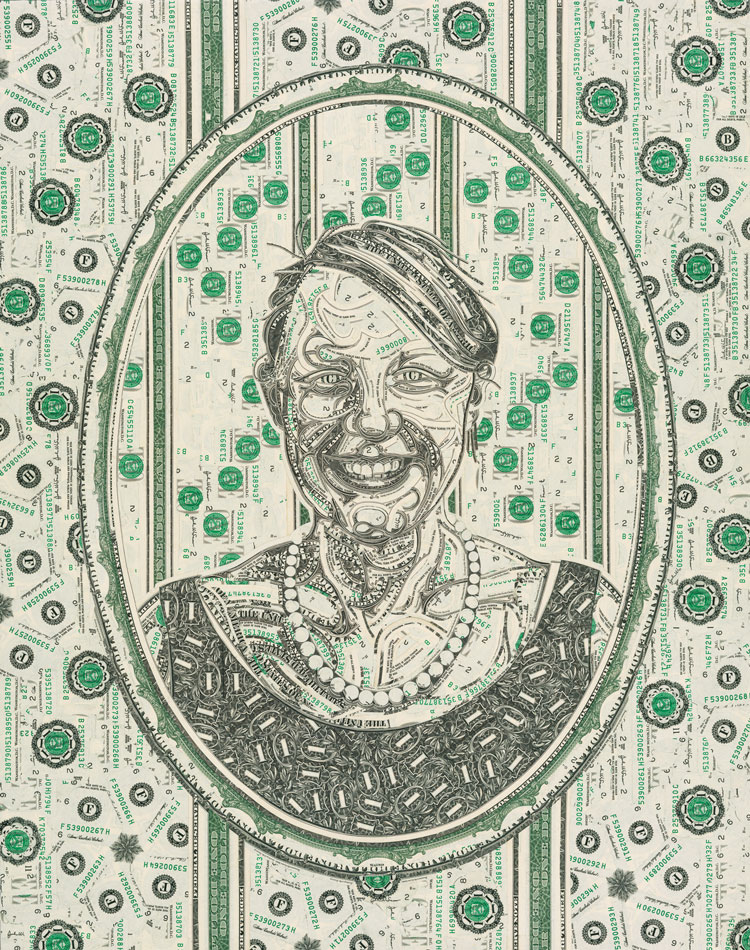
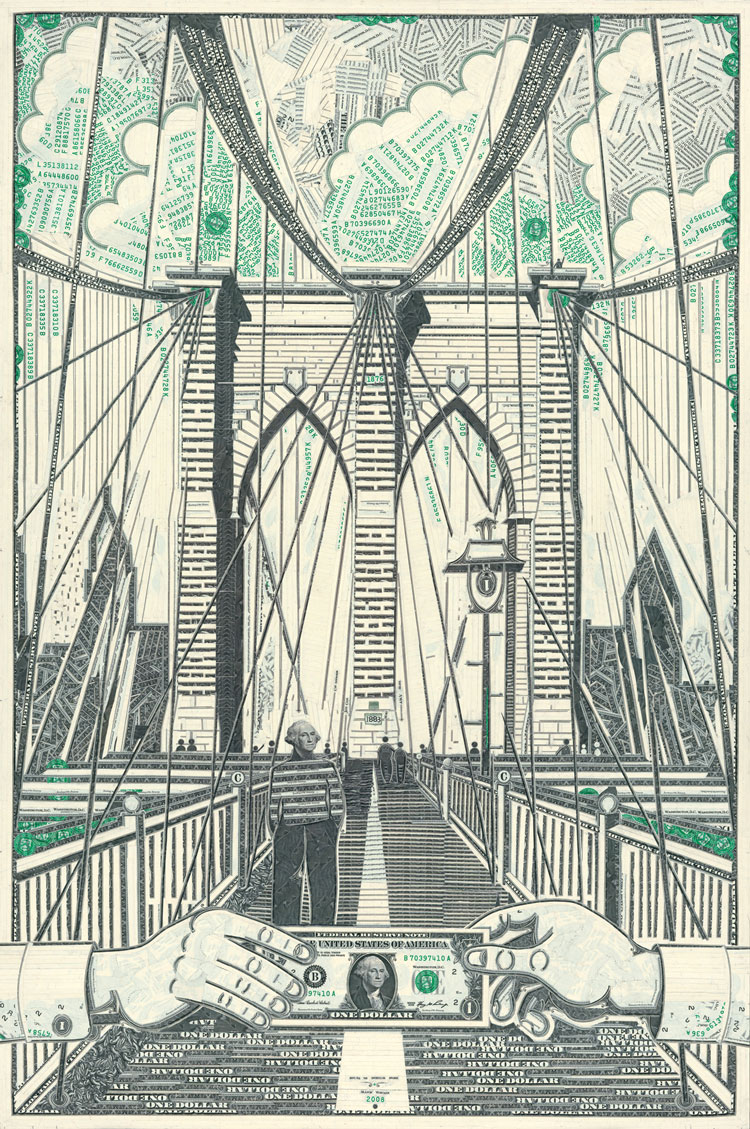
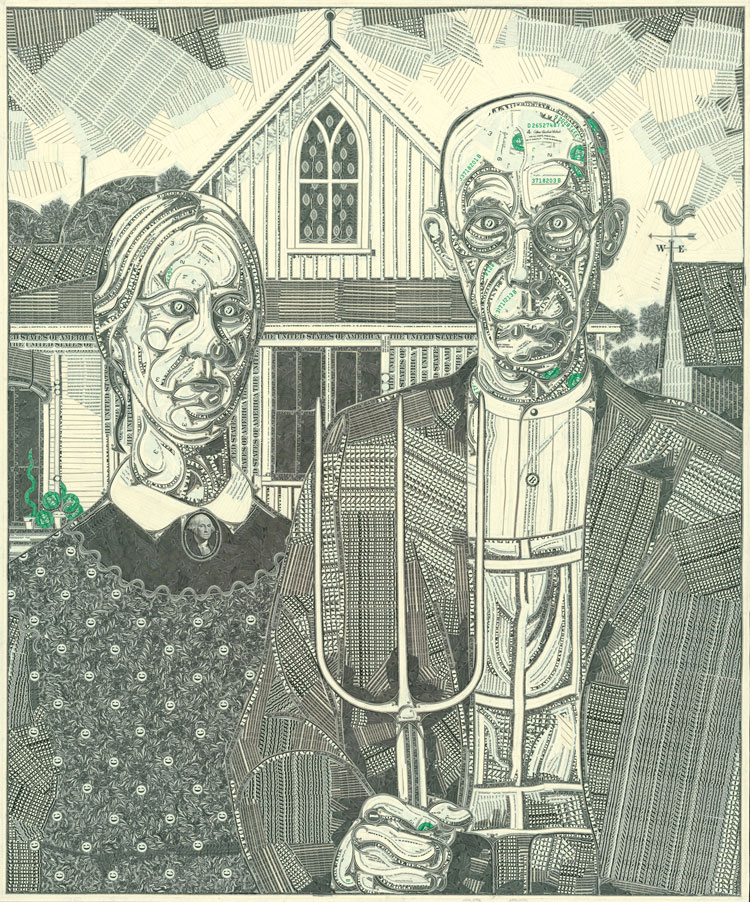
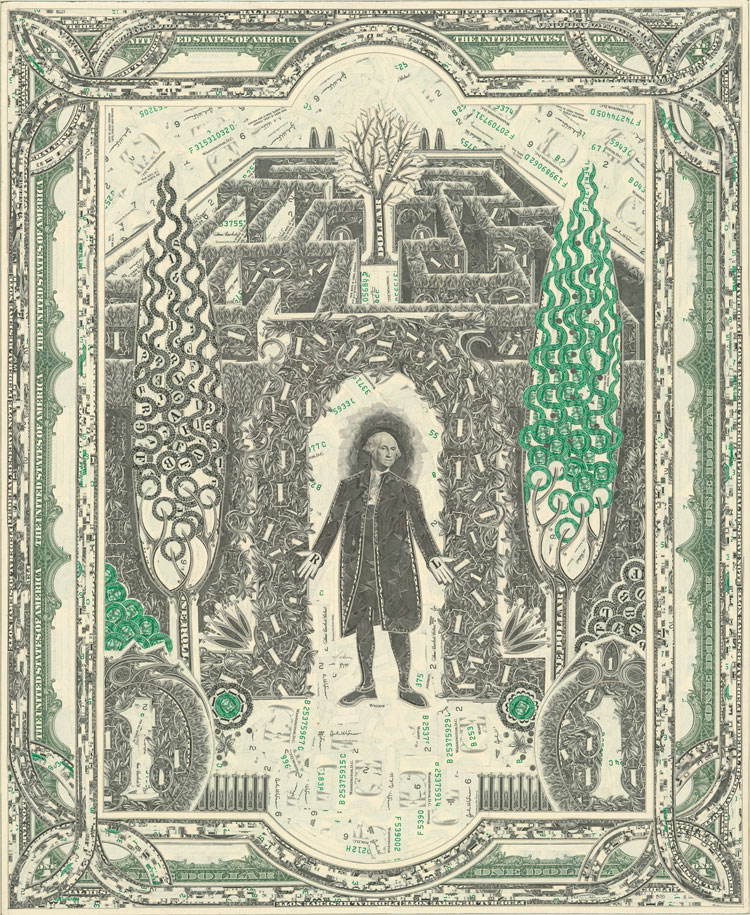
Interview continued
Though I mostly use ones, I did cut up a $100 bill once because I needed Franklin’s portrait. I’ve been working with currency now for eight years and I’m still discovering new ways to approach the material. It takes a lot of patience. When I first started making portraits I thought, “Oh, this is it.” But then I saw a show of tapestries at The Met and realized I should go bigger.
How big are we talking?
A lot bigger. I’m currently working on a 16-foot-tall Statue of Liberty in scale with Washington’s portrait on the bill. I’d done the torch panel years ago and a patron liked the project enough to commission the rest of the piece. The collage of the statue will be accompanied by the work records and a note of its making. Doing her robes has been kind of tedious, but there will be scenes going on inside her illustrating liberty or lack thereof. George in prison, George rappelling down the side of the statue. It should be fun. Ideally there will also be a spiral staircase or a mezzanine that accompanies the collage so that people can walk up and see the top up close. Like inside the statue itself.
How much money will go into one of your collages?
Most of any given piece has only a single layer of paper on it, so you can tell about how many bills go in by imagining the surface covered once by whole bills, plus a few extra for what overlap there is. In the studio we keep hoppers of bills separated into parts to use piece by piece as well as binders of prepared texture swatches and collaged passages to add wholesale. I love all the process. For some of the collages we track how many scraps of paper are glued down. I see that sort of accounting as an interesting extension of the material. When “Liberty” is complete, for example, we’ll be able give statistics on each of her 13 panels individually, and also say that the whole thing took 1234 bills cut into 54,234 pieces, or whatever, and here’s all the scraps we didn’t use.
I remember hearing when I was a kid that it’s illegal to throw away or tear up money. Do you know if this is true? Do people ask you about it?
I think, by the current letter of the law, yes, it is illegal. Whether it should be illegal is the question that follows. The language in existing laws is convoluted and a bit confusing. Most related laws punish offenders only “for fraudulent intent.” And many of the pertinent laws seem a bit vestigial. A hundred and fifty years ago, bank notes weren’t issued from the Federal Reserve but from individual banks. They were easier to mess with and altering scams abounded so maybe they needed stricter policing. Me—I’m not trying to fool anyone. There’s no scam here. I’m not hurting anyone by making my art. Through it I keep a couple of assistants employed, generate a bunch of tax revenue, and give people something to look at and think about. I find it curious that so many people assume it should be illegal—that our culture has this reverence for little pieces of paper.
Currency is one of the first times we get a sense of the power of government and institution—the idea that it’s illegal to mess with it really emphasizes that power. Now that the American and global economies are suffering do you find yourself in conversation about the politics of your work more often?
Everyone is talking about the economy right now. I don’t know if people are talking to me as the guy who cuts up money or just because they’re already talking.
But it does seem like your work has taken on some sort of accidental significance recently.
I had an exhibition in September at Pavel Zoubok Gallery in New York, just when the economy was going from bad to really bad. It was accidentally prescient. I’d go to the gallery and listen in as people looked at the work and they would joke that I was some kind of fortune-teller or that I had engineered the economic collapse just to fuel interest in my art career.
I can see how, depending on the state of the economy, the work could look sort of like cultural criticism or like a more extravagant celebration of capitalism.
The work can definitely be read from two different directions. And in a boom time, you might look at the work with more rose-colored glasses. In the “Hedge Maze” the maze could be fun to play in, or it could be oppressive. I keep a list of economic jargon. I always want to have five or six reasons for doing a specific image. I throw a lot of ideas away. I was excited about the phrase “hedge fund” because I’ve loved hedge mazes since I was a kid. In my mind, if you had a hedge maze in your backyard, you were really someone.
When I started with the currency collage, I wasn’t thinking about economy, or Americana, or founding fathers. My interest in those things has grown out of the work. I always want a subject matter that follows naturally from the material.
And did it make a difference in the direction of the work?
These things take a lot of time, and I think while I’m working.
Yeah, I’m struck by how meticulous and laborious these collages are.
I always keep some work off to the side that’s a little freer and less time consuming. Among other things, as a break, I’m painting the images from playing cards. I like taking a thing that everyone is used to and making them see it again.
